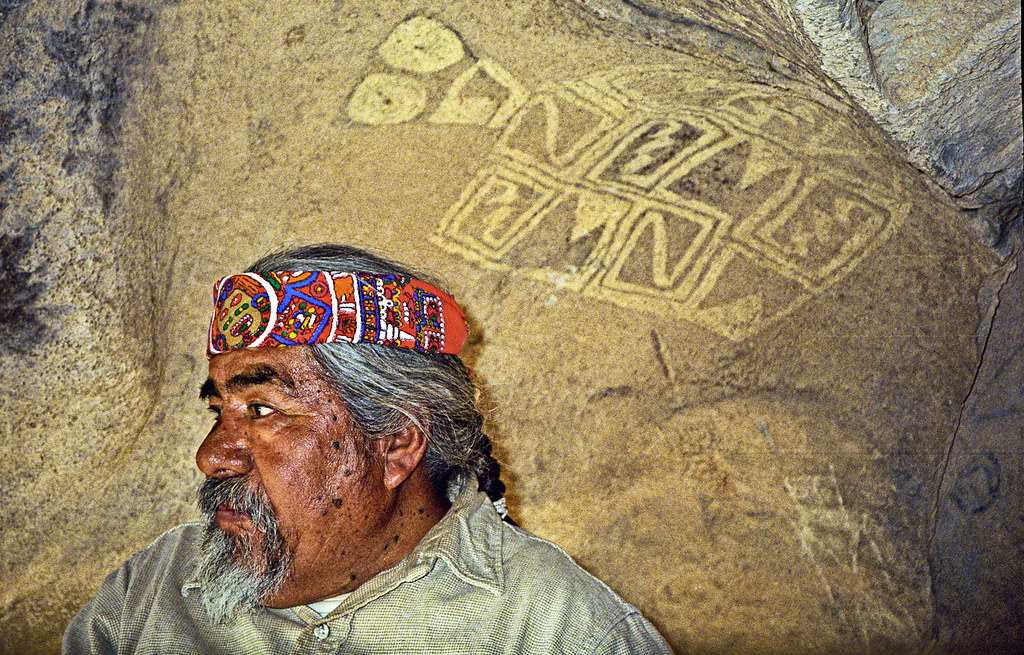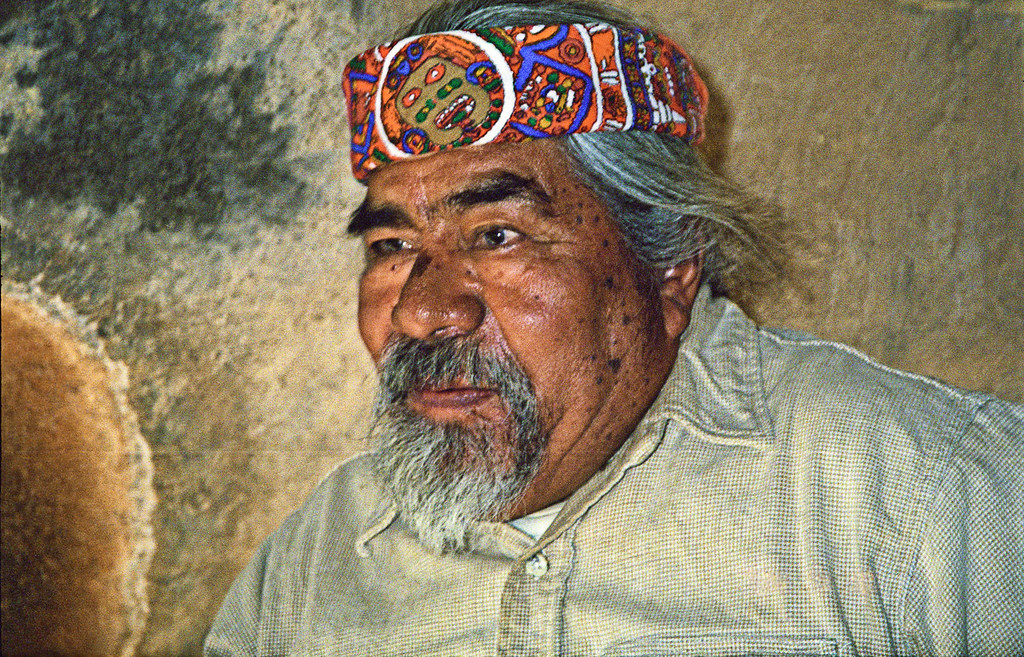
Tlakaelel is important in the Mexica movement, an indigenist religious revival movement which began in Mexico City in the 1960s. It is organized, if that is the word, into highly independent local groups called kalpullis. Partly traditional, but tending towards syncretism, this movement tapped into Chicano identity issues in the American southwest, where the kalpullis have adopted a lot of US Native American religious ceremonies and beliefs. Over the years Tlakaelel, whose real name is Francisco Jimenez, has evolved a sort of pan-Indian ideology which has a Nahuatl mythological core, but a lot of ceremonial practices gotten from North American Indians.
A few years before her death, my wife Kay Sutherland, an anthropologist whose specialties included Native American rock art and meso-American religions, had concluded that a lot of elements of southwest rock art represented a fusion of Meso-American and native pre-Puebloan concepts. Through a complex series of events, this led some kalpulli members in El Paso to seek out her assistance in getting the Texas parks system to give their kalpulli the same status to conduct religious ceremonies at Hueco Tanks State Park as some US Native American groups had.
So she spent some time interviewing Tlakaelel, who is revered as an elder by most US kalpulli groups, and she took him to important rock art sites like Hueco Tanks. She came to feel that the kalpulli understanding of these sites was certainly as valid as that of the official Native American groups. Now, the parks department wanted only groups with historical cultural continuity with Hueco Tanks. Their concept of cultural continuity was simplistic, but hey, these people are highly politicized bureaucrats, and simplistic is all they know. Kay gave it a shot, but their basic prejudice (literally) was that these people are Mexicans reinventing themselves as Indians, a viewpoint completely at odds with Kay's anthropological training, not to mention her Jungian personal views of religion.
Anyway, Kay was sympathetic to the kalpulli, and presented a perhaps overly sophisticated argument to the parks people that all religions reinvent themselves all the time, and moreover that there was in fact a greater continuity of myth between the religious symbols found at Hueco Tanks and the contemporary belief system of the kalpulli than with the contemporary belief systems of some of the allowed groups. But no dice. The kalpulli lost.
So they conduct ceremonies in the desert outside Hueco Tanks.
I think these photos were taken in 2001. Tlakaelel would have been about 80 years old here. He has a certain personal presence, as you may be able to see from the pictures.
Update: Tlakaelel died on July 26, 2012.

No comments:
Post a Comment